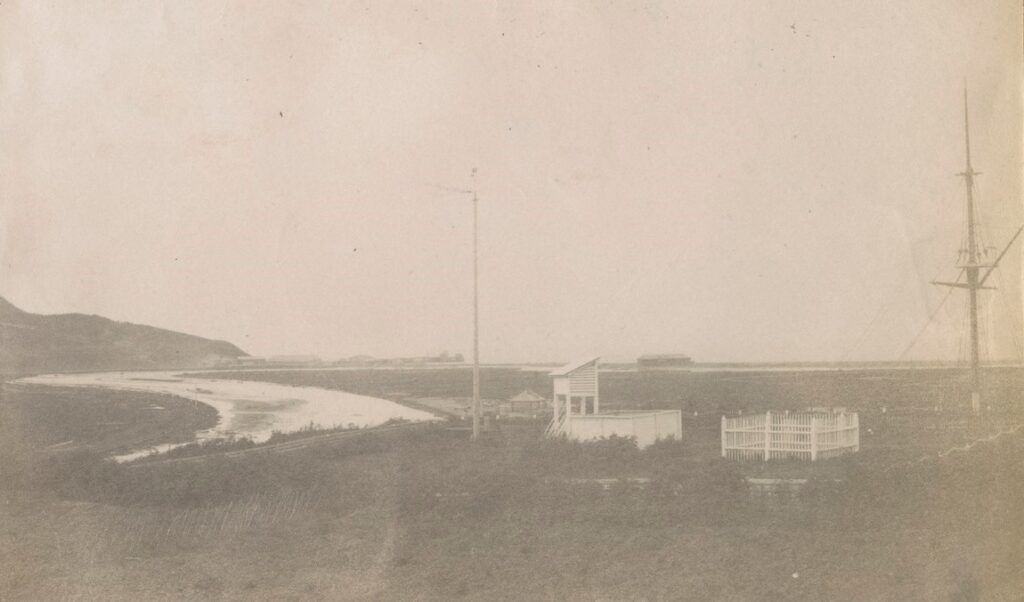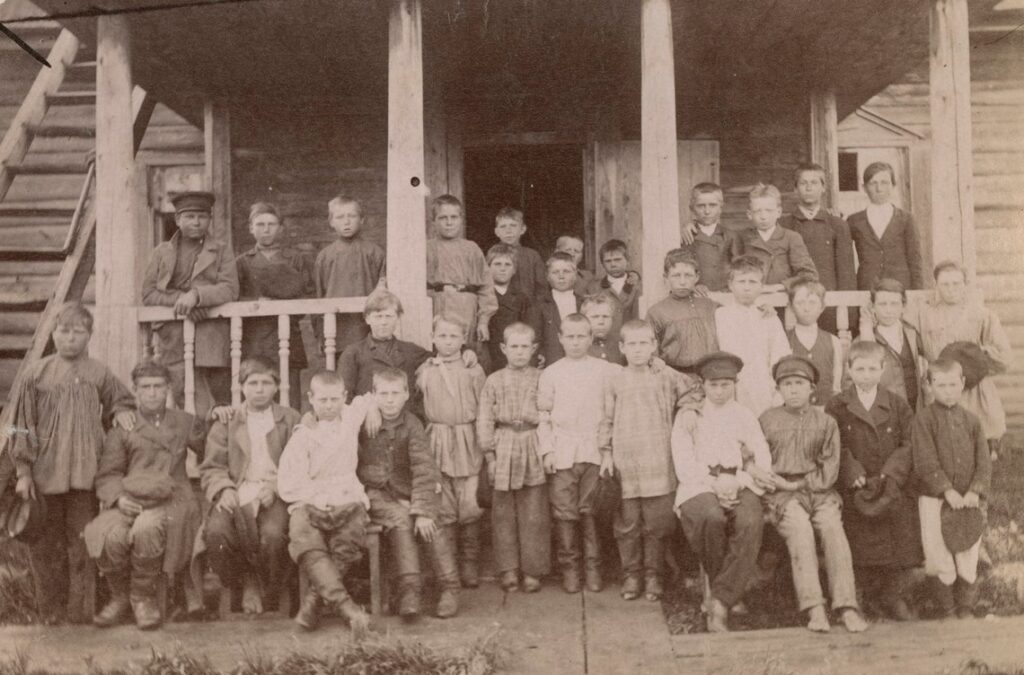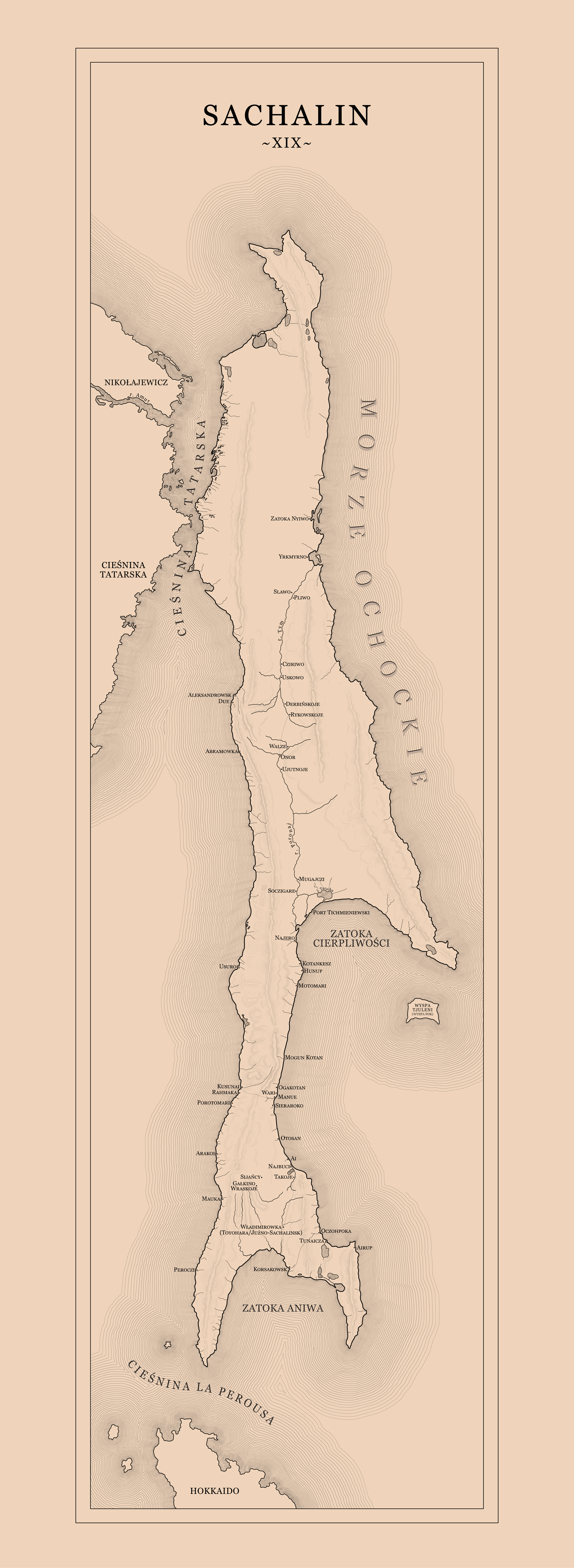
Natural Science
Meteorology, the Nature of Sakhalin, and Bronisław Piłsudski
Activities
Witold Armon’s Polish Biographical Dictionary (1981) contains the following information about Bronisław Piłsudski:
“In [the years] 1894-6, he conducted weather observations at the local weather station, and the reports on these observations for [the years] 1895 and 1896, published in the Sakhalin calendar, were Piłsudski’s debut as a writer. Also in 1894, he undertook botanical research for the newly established museum in Khabarovsk (he had exchanged correspondence with Benedykt Dybowski on this matter since 1897); he received his first instructions, literature, and encouragement from a political exile residing in Alexandrovsk, the future prominent Russian ethnographer L.J. Sternberg”.
This is a very interesting topic, as Piłsudski is generally known rather as an ethnographer and anthropologist. Let us take a look at this area of his activity.
The development of Russian-controlled Sakhalin began in the mid-19th century. The island had great strategic importance in the Far East. Its ports facilitated the traffic between settlements on the mainland with the islands of the Kuril Archipelago and Kamchatka.
Therefore, learning about the important factors shaping the island’s weather was very important. Consequently, the island’s administration set up weather stations both at ports and inland relatively early on. Initially, they were usually operated by military officers. In 1853-1854, Lieutenant N. Rudanovsky recorded basic meteorological data (temperature, wind direction, amount of precipitation) at the Muravievskoye Post. In the years 1855-1857, this observer worked in the settlement of Due, the oldest penal colony at the coal deposits in the central part of the island. In 1861, Lieutenant Margasov recorded meteorological data at the Kusunai Post in the southern part of Sakhalin, and in 1868-1869, Lieutenant Colonel F. Depreradovich recorded meteorological data at the Muraveysk Post on Busse Lake at the island’s very southern tip. In the important Korsakovo Post located in the port, meteorological observations were carried out periodically (1871-1872) by military doctor U. Bieliński. The results of these essentially casual measurements were summarized by M. Micul, who determined the average annual air temperature.
Systematic weather observations began in Sakhalin in 1881 as part of the work of the local medical office. It was then that P. Surunenko built a small measuring station in the Korsakovka settlement near the Alexandrovskoye Post. Thanks to this doctor’s efforts, an observation station was established in the village of Rykovskoye in 1886. At the time, it was headed by a medic M. Krzyżewska. Observers at the Rykovskoye station in different years were: I. Yuvachev (one of the four political exiles who arrived on the same ship with Piłsudski), B. Piłsudski, and N. Perlashevich. The results of daily observations were announced in the periodical of the Main Physical Observatory in St. Petersburg, and current weather data were published annually in local journals, on a monthly basis. Later, a network of weather stations was established in southern Sakhalin: in 1893 at the Crillon Lighthouse and in 1896-1898 in the settlements of Mauka, Nayoro, Siraura, Galkino-Vrasskoye, and Lutoga, and at the Korsakovsky and Tikhnievsky Posts.

Photo from “Bronisław Piłsudski’s album containing photographs of Sakhalin” in the collection of the Polish Academy of Arts and Sciences

Photo from “Bronisław Piłsudski’s album containing photographs of Sakhalin” in the collection of the Polish Academy of Arts and Sciences
The construction of weather stations in the Korsakovsky Post and the settlement of Galkino Vrasskoye were managed directly by Bronisław Piłsudski. One document from the office of the Sakhalin military governor noted that Piłsudski “became known as a very useful person for [the island of] Sakhalin.” This statement was influenced by his previous research at the weather station in Rykovskoye and his significant contribution to the development and management of the Sakhalin Museum in Alexandrovskoye.
For this reason, when the authorities were looking for a candidate to organize new observatories in the south of the island, the choice was Bronisław Piłsudski who had extensive experience in this area. Moreover, he had knowledge about the work of other weather stations on the island. He was collecting these data periodically, when he was replacing the governorate doctor. On this basis, Piłsudski drew up a special instruction for the work of observatories with a particular definition of duties for people making measurements. In the instruction, among other things, he referred to mentioned above his personal texts published in the Sakhalin Calendar.

In late June 1896, having received the necessary equipment, Bronisław Piłsudski left the Rykovskoye settlement for the Korsakovsky Post. He was instructed to select a suitable site for the different facilities of the weather stations, buy or build a special house, set up survey instruments, form a crew of observers and teach them basic operations. The authorities wanted to make sure that the weather station would meet all the standards of a modern observatory. For this reason, they instructed Piłsudski to build masts with wind gauges up to 15 meters high, install rain gauges, galvanized instrument booths, siphon barometers, Pade aneroids, dysphometers, solar filters, various thermometers (also for measuring temperature of the soil), etc.
At the same time, one should bear in mind that Piłsudski was not a physicist by education, and that he acquired the necessary meteorological and climate knowledge through self-education and by performing various experiments at the Rykovskoye weather station.
Over the summer, all the work was completed. Aware of the scientific importance of the task, Piłsudski took these activities very seriously and this is evidenced by his document and detailed descriptions of the weather stations preserved in the Central State Archive of the Russian Far East in Tomsk. In the preserved document, he emphasized that the study on the island’s climate and the prediction of the weather depended in large part on diligence and precision of the weather station operators. With this in mind, he adapted the general instruction of the Main Physical Observatory in Pulkovo near St. Petersburg to the specific needs of the new observatories built on Sakhalin. In the instruction, he presented simply and clearly the daily work of the persons carrying out the measurements, the rules for completing activity logs and their forms, the methods for presenting monthly and annual reports, and other data to be included in the required documentation.
In a similar manner, Piłsudski organized the weather station in the Galkino-Vrasskoye settlement, which, like the station at the Korsyakovskoye Post, began its operation in the fall of 1896.
Bronisław Piłsudski’s departure from Rykovskoye to the south of Sakhalin in 1896 had a fundamental impact on the nature of his further research. This is because at that time, he met the Ainu people who live in the southern part of the island.
Following the tragic fate of these people, he realized that it was to them that he had to devote his time and creative energy. Work at the weather stations was continued by the observers trained by Piłsudski.
Based on
Vladislav Latyshev, Zbigniew Wójcik, “Natural Beginnings of Bronisław Piłsudski’s Scientific Activity,” “Niepodległość i Pamięć”, year III, no. 2(6), 1996.





